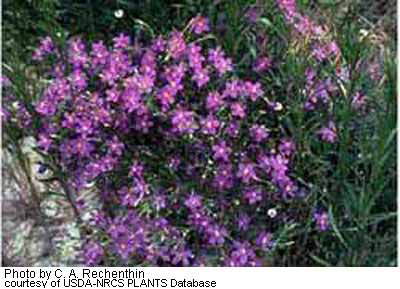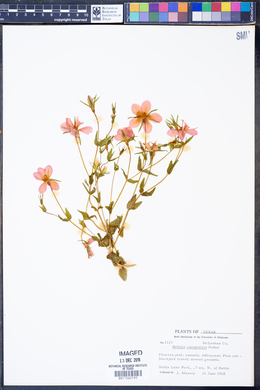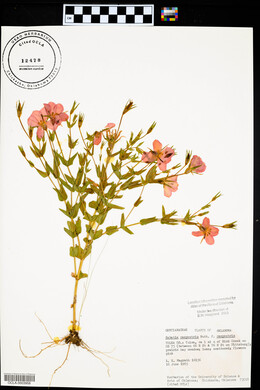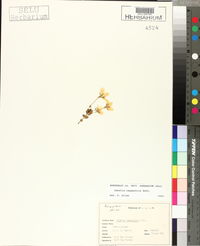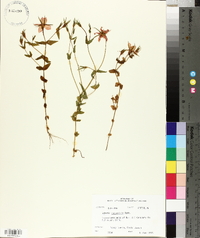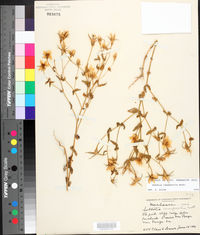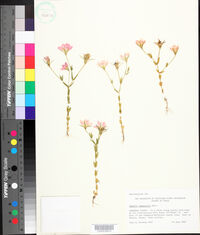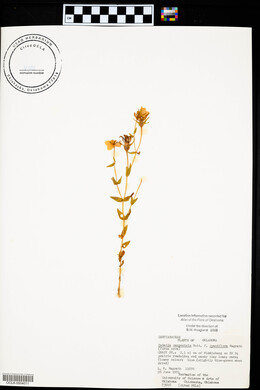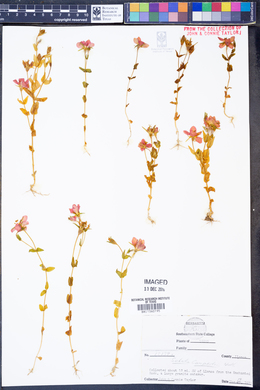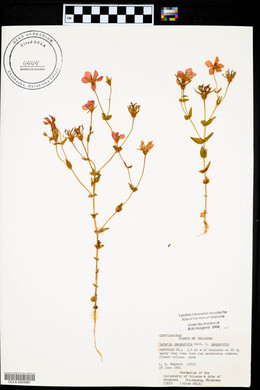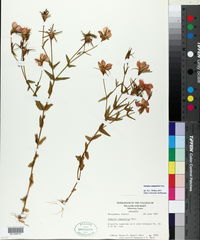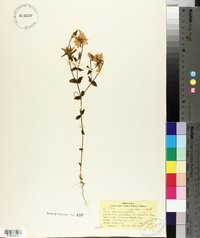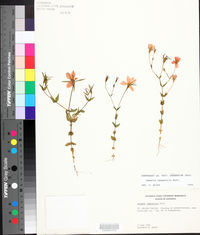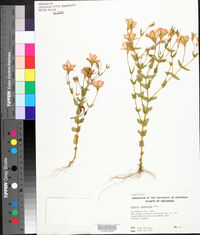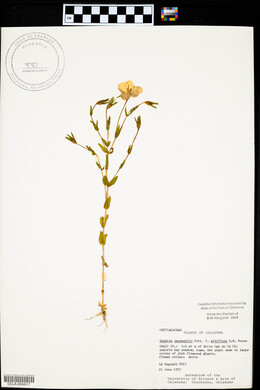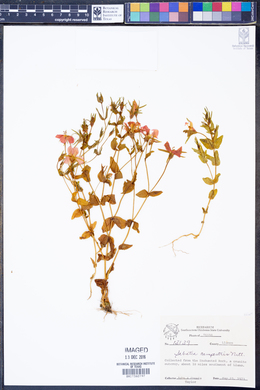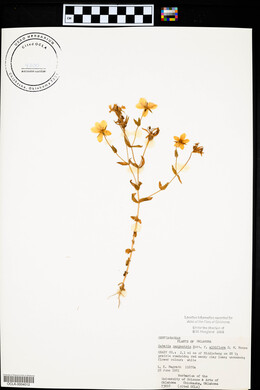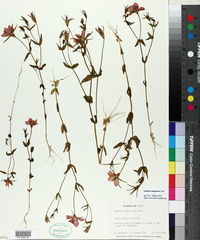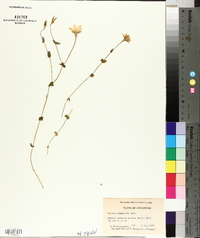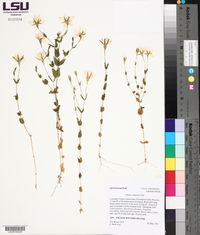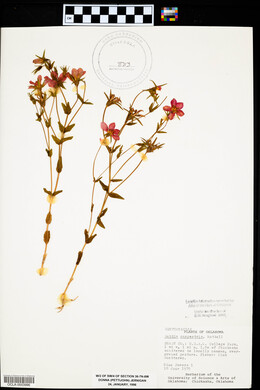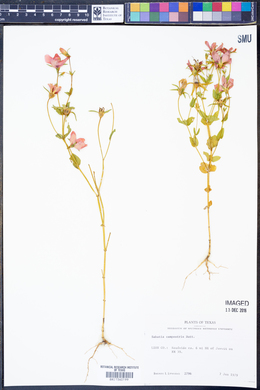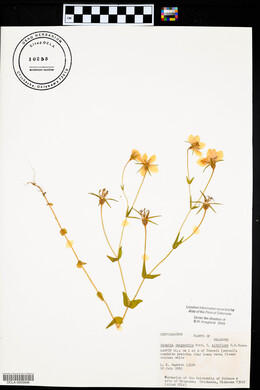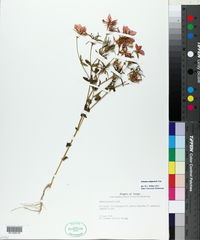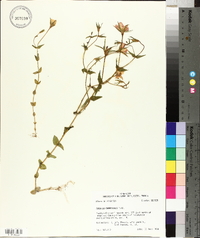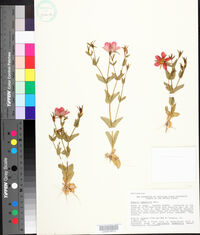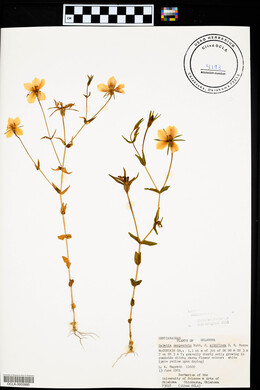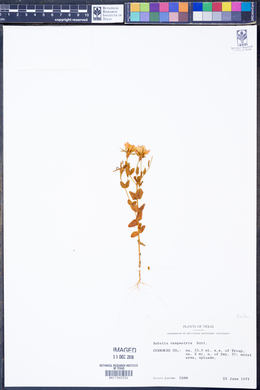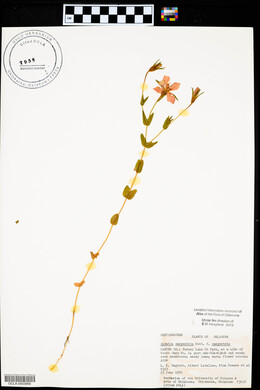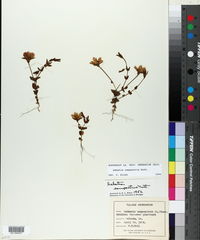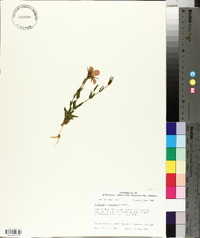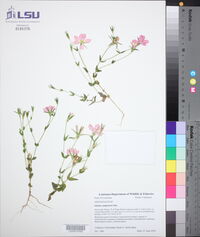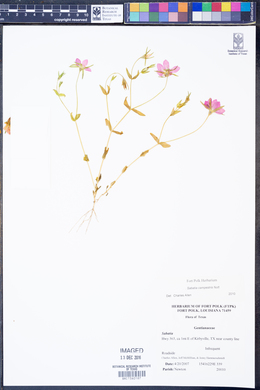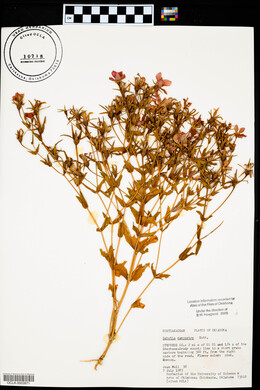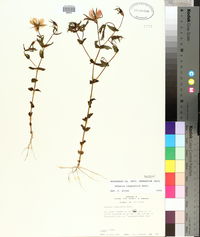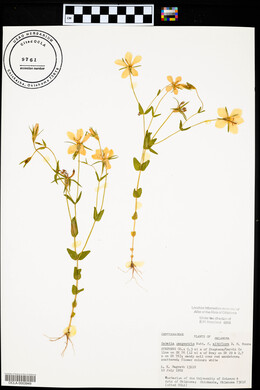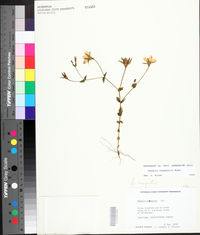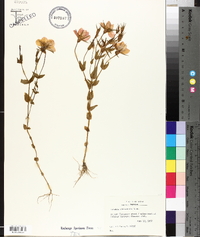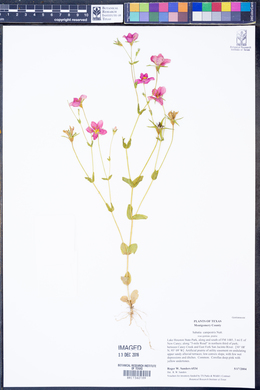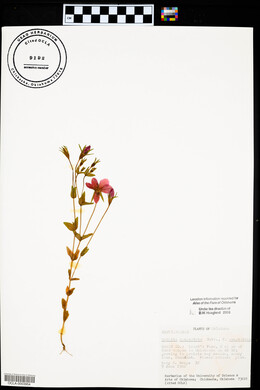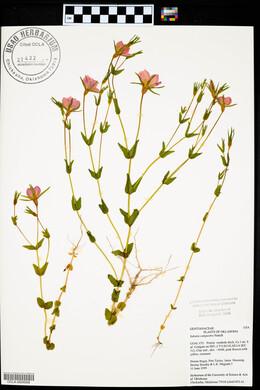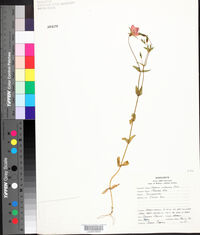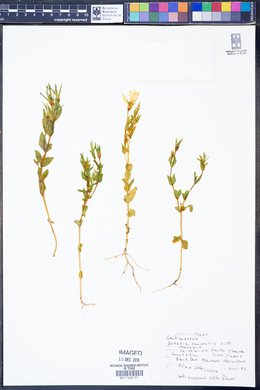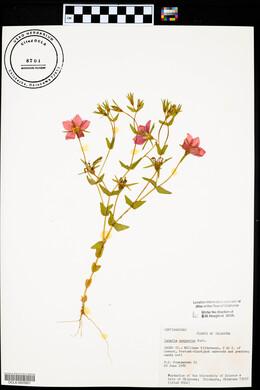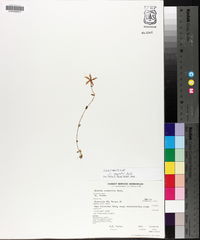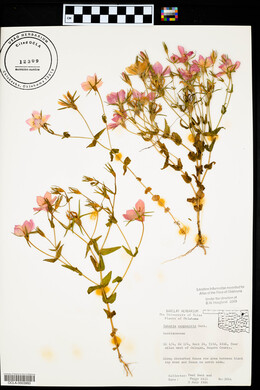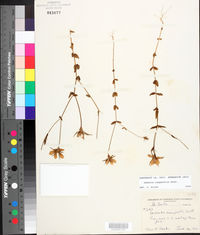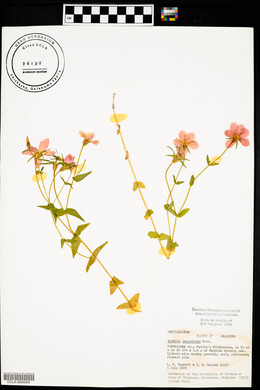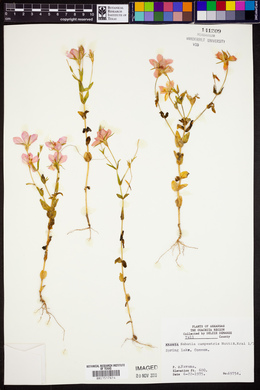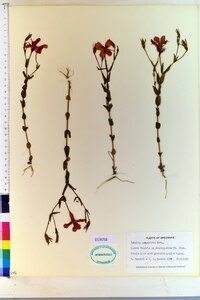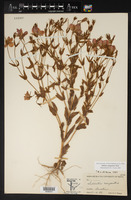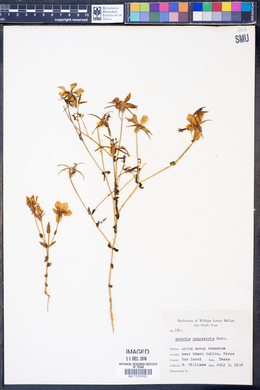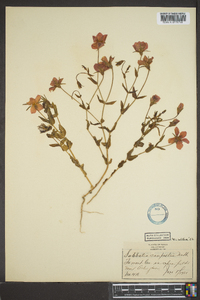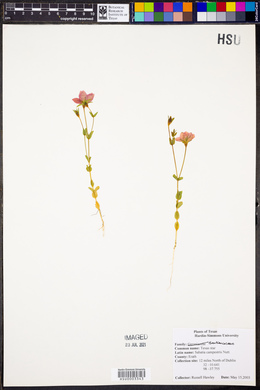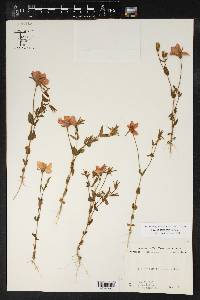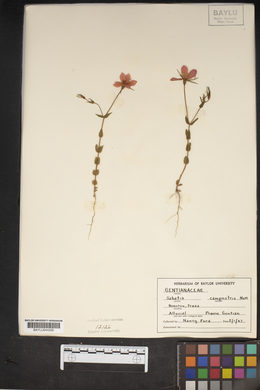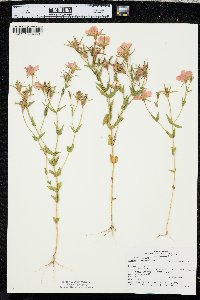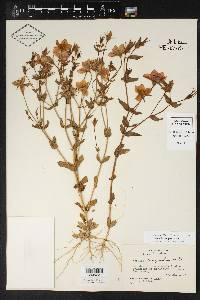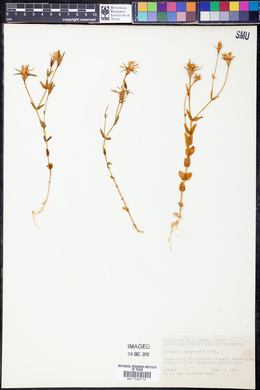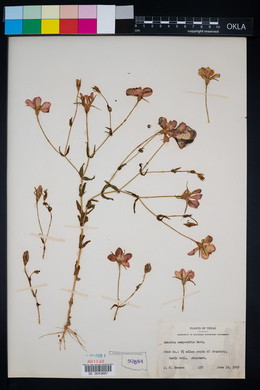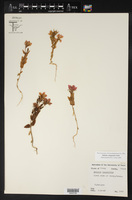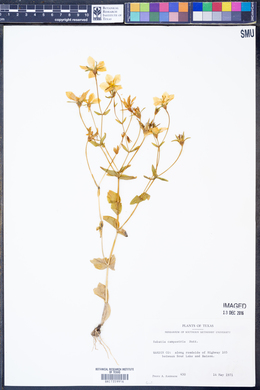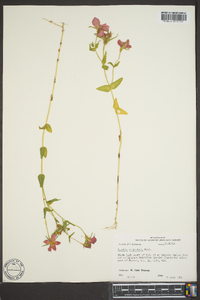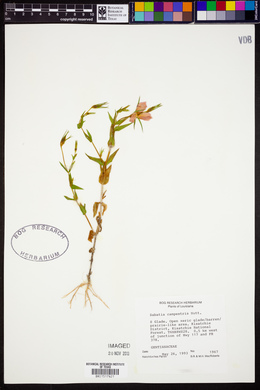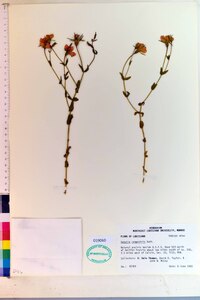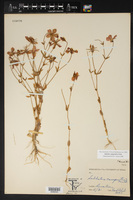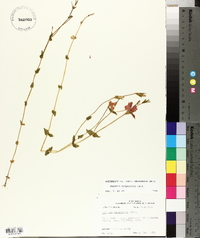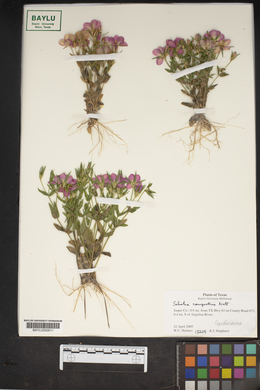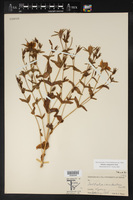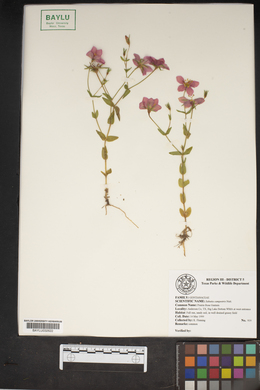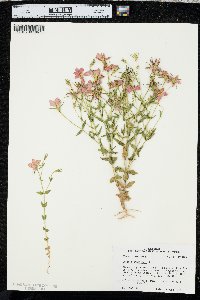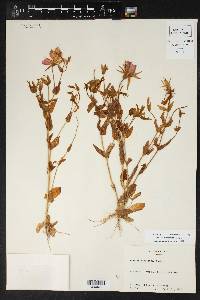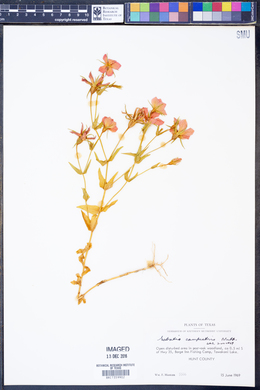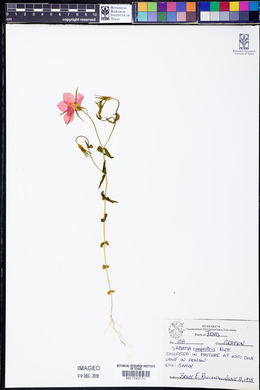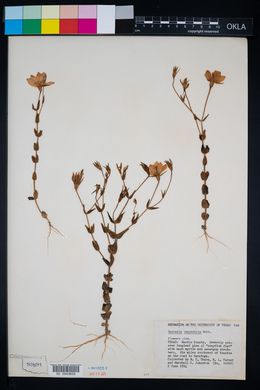Sabatia campestris
|
|
|
|
Family: Gentianaceae
Texas-Star, more...Texas star
|
Annual herb 10 - 40 cm tall Stem: erect, strongly four-angled (but not winged), commonly branched from below the middle with the branches usually alternate and widely divergent. Leaves: opposite, stalkless, non-toothed, 2 - 4 cm long, somewhat lance-shaped, heart-shaped clasping at base, thin and membranous with three to five conspicuous nerves. The upper leaves narrow to a pointed, thickened tip, while the lower leaves are wider and have a more rounded or blunt tip. Basal rosette leaves lacking. Inflorescence: of mostly alternate, loosely arranged branches with rigid, wiry, 2 -10 cm long, five-angled flower stalks. Flowers: long-stalked, radially symmetric, 1.8 - 3.4 cm wide, lilac, rose, or pale pink with a greenish-yellow center. Sepals: five, but fused at base into an almost translucent, 3 - 8 mm long, bell-shaped tube with five, strong, elongate ribs or wings, which alternate the separate lobes. The sepal lobes are 1 - 2.5 cm long, lance-shaped, tapered from base to tip, thin and membranous, but strongly three-nerved with the two lateral nerves very obvious. Petals: five, but fused into a short tube, then separating into longer, 1.5 - 2.2 cm long, spreading, oval lobes. The petal lobes have yellow, three- to six-lobed spots at their bases, which are usually bordered by a white line, but no glands are present. Stamens: five, with white to pale yellow , 3 - 6 mm long filaments ending in bright yellow, 2.5 - 5.5 mm long, linear anthers. Pistil: with a single-chambered, superior ovary; a white to pale yellow, slender, 3 - 4 mm long style; and two, yellowish, 5 - 8 mm long stigma lobes. Fruit: a many-seeded, single-chambered, 5 - 9 mm long capsule about the same length as the sepal lobes. Similar species: Sabatia campestris is quite similar to S. campanulata, but that species is a perennial, the stem is round in cross-section, the leaves do not clasp the stem at their bases, and the fused sepal tube is shorter (about as tall as broad), not wing-angled, and papery in texture. Also similar is S. angularis, but that species is an annual or biennial with basal rosette leaves, it has evident wings on the stem angles, the inflorescence branches are opposite, and the fused sepal tube is shallow with small ridges only at the very base. Flowering: June to September Habitat and ecology: Believed extinct in the Chicago Region, the only collection was from an old field. Usually this species is found in more or less open places such as prairies or fields, and it can tolerate varying moisture regimes from wet to dry. Occurence in the Chicago region: native Notes: The genus subsection to which this species belongs (subsection Campestres) exists almost entirely west of the Mississippi River. The single record from the Chicago Region lies far north of all other reports of the species, and is also at the furthest east extent of the species' distribution (see Wilbur 1955). This species is now believed extirpated (extinct) in the Chicago Region. Etymology: Sabatia is named after Liberato Sabbati, an Italian botanist from the mid-1700's. Campestris means "of the Plains". Author: The Field Museum Annual, 2-4 dm, commonly branched from below the middle; lower lvs lance-ovate, 2-4 cm, broadly rounded to truncate or subcordate at the sessile base; rameal lvs lanceolate; fls all long-pedicellate, cal-tube 5-winged, the wings truncate or slightly projecting at the top; cal-lobes lanceolate, gradually tapering from base to tip, (10-)15-20(-25) mm, the strong lateral nerves much more prominent than the midnerve; cor-lobes lilac, mostly 15-22 mm; 2n=26. Variously wet or dry, usually ±open places; Ill. and Mo. to Miss. and Tex. June, July. Gleason, Henry A. & Cronquist, Arthur J. 1991. Manual of vascular plants of northeastern United States and adjacent Canada. lxxv + 910 pp. ©The New York Botanical Garden. All rights reserved. Used by permission. |

